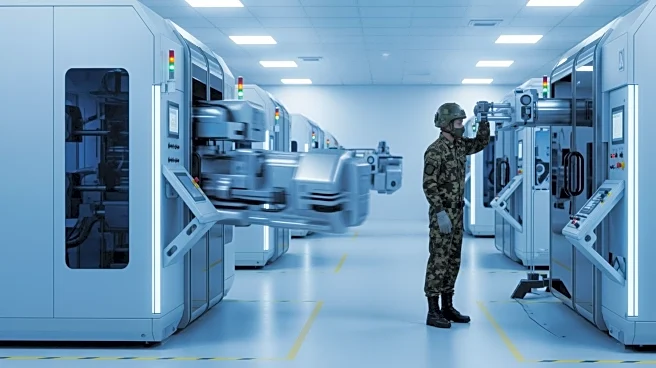What's Happening?
NATO leaders have emphasized the need for rapid industrial mobilization to strengthen defense capabilities in response to escalating global threats. U.S. Air Force General Alexus Grynkewich, the Supreme
Allied Commander for Europe, highlighted the urgency for the defense industrial base to deliver essential military capabilities swiftly. During the LandEuro conference in Wiesbaden, Germany, Grynkewich stressed the importance of industry stakeholders responding promptly to military needs, advocating for a cohesive industrial ecosystem across NATO. The alliance has committed to spending 5% of GDP on defense by 2035, incentivizing industry to expand production lines and increase research and development. This initiative aims to integrate innovative technologies and legacy systems, enhancing interoperability and effectiveness in joint operations.
Why It's Important?
The call for industrial mobilization is crucial for NATO's ability to respond to current and future security challenges. By committing to increased defense spending, NATO aims to ensure that its member states can rapidly develop and deploy military capabilities. This move is significant for the U.S. and European allies as it addresses the need for a robust defense industrial base capable of supporting military operations. The initiative also seeks to align defense efforts across the alliance, fostering interoperability and joint effectiveness. The focus on integrating new technologies and legacy systems is vital for maintaining a competitive edge in defense capabilities, particularly in light of potential threats from adversaries like Russia.
What's Next?
NATO's commitment to industrial mobilization will likely lead to increased collaboration among member states to develop and share defense strategies. The alliance may face challenges in reforming defense acquisition processes and navigating budgetary frameworks. However, the focus on streamlining foreign military sales and enhancing regional defense plans, such as the Eastern Flank Deterrence Line, will be pivotal in achieving operational readiness. The integration of advanced technologies, like Palantir’s Maven Smart System, will play a key role in augmenting military decision-making processes. As NATO aligns its capabilities with those of Ukrainian forces, the demand for enhanced air defense systems and long-range strike options will remain a priority.












